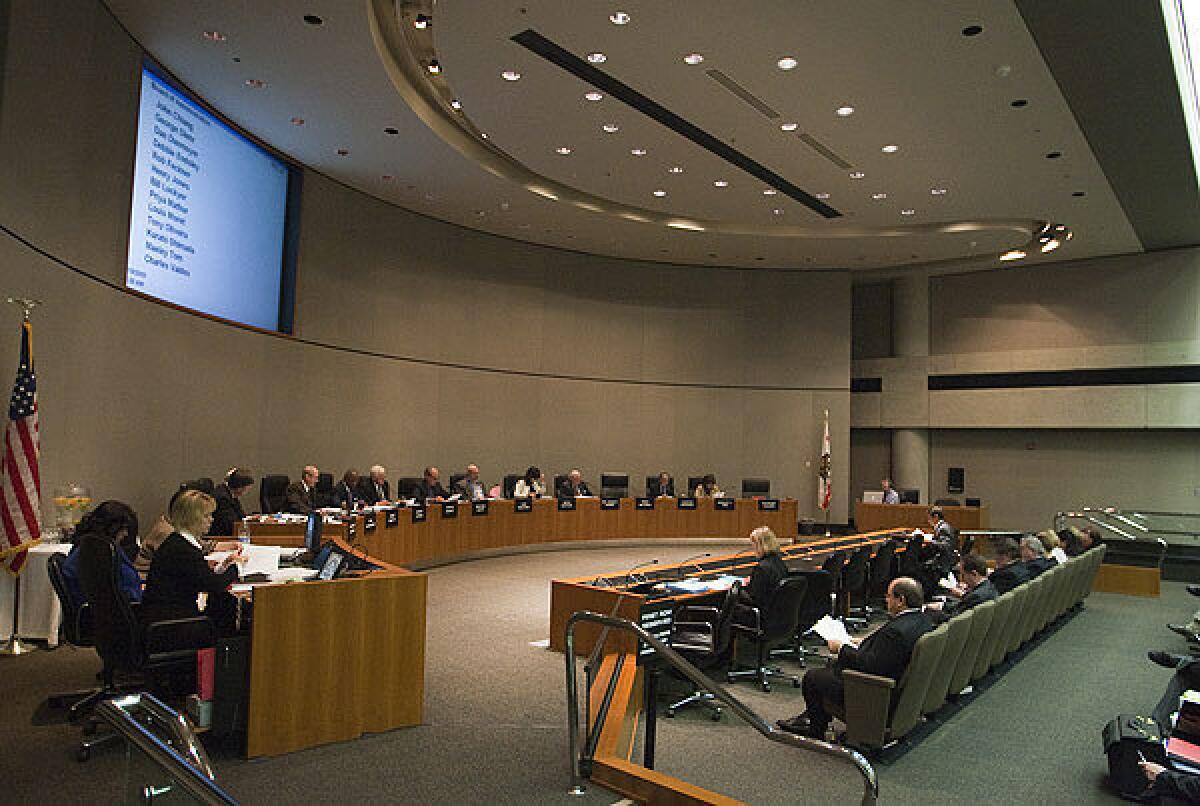CalPERS decides hedge funds are a sell

SACRAMENTO — The country’s biggest public pension system is getting out of hedge funds.
The California Public Employees’ Retirement System, with $298 billion worth of investments in its portfolio, announced that over the next year it plans to sell about $4 billion worth of hedge fund investments as part of a continuing process of simplifying its portfolio and reducing investment costs.
Hedge funds, which are private partnerships that invest in a wide variety of sometimes speculative markets, are too complicated and expensive for CalPERS’ needs, said Ted Eliopoulos, the fund’s interim chief investment officer.
CalPERS said the decision wasn’t based on the performance of the program.
Although hedge funds “are a viable strategy for some,” Eliopoulos said, they no longer fit well into CalPERS’ overall investment mix.
Eliopoulos told the CalPERS board Monday that the investment staff planned to sell — gradually over the next 12 months — the fund’s stake in 24 hedge funds and six mega-hedge funds that invest in other hedge funds.
During that period, investment officers will come up with alternate ways to invest the freed-up money. The board informally endorsed the plan, though it took no vote, said CalPERS spokesman Brad Pacheco.
CalPERS’ decision to sell its hedge fund holdings probably will be closely watched by other public pension systems. Over the last decade, many funds have been increasing their hedge fund stakes.
But a growing number of public pension funds in California and other states are getting out of hedge funds because of the high fees, risk and recent modest returns.
Last year, the L.A. city department that manages the pensions for the police and fire departments decided to sell its hedge funds. They represented just 4% of the department’s investment portfolio, but 17% of the fees it paid.
The hedge fund industry has routinely charged a 2% management fee plus an additional 20% of the partnership’s profits.
CalPERS, however, has slowly adopted a less risky approach since losing more than a third of its portfolio value during the Great Recession and in its aftermath. Those losses subsequently have been recovered as the fund rose to a recent high of $300 billion.
Since that crash, the pension has shed most of its risky, money-losing urban real estate and raw land investments and has concentrated on steady income-producing commercial properties.
CalPERS also has cut back on investments in commodities and other so-called inflation-protected markets. The fund now concentrates on private equity, emerging markets and infrastructure, with an emphasis on California projects.
In the fiscal year that ended June 30, CalPERS reported an 18.4% return on investment, far higher than its goal of a 7.5% average annualized rate of return.
Hedge funds during the same period earned 7.1% and racked up $135 million in fees.
Since September 2013, CalPERS’ board has been following a revised set of investment guidelines.
One of those stresses that the fund “will take risk only where we have a strong belief we will be rewarded for it.” A second guideline says that investment “costs matter and need to be effectively managed.”
CalPERS invests contributions from employees and employers to provide retirement benefits for nearly 1.7 million state and local government workers, retirees and their families.
Twitter: @MarcLifsher
Times staff writers Melody Petersen and Stuart Pfeifer contributed to this report.







